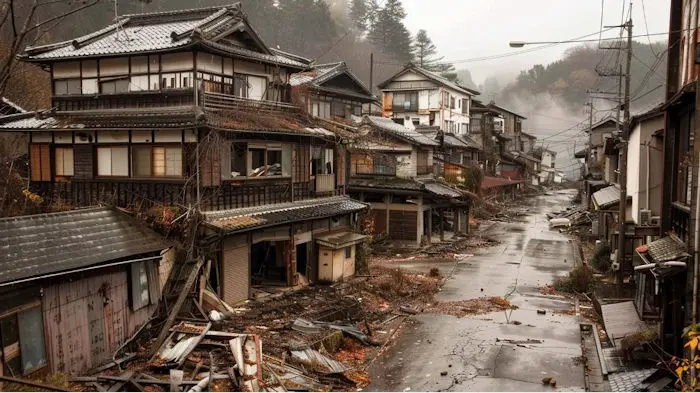Japan Faces Record Number of Vacant Homes: A Growing Crisis Amidst Declining Population

News Mania Desk/Agnibeena Ghosh/25th July 2024
Japan is grappling with a mounting crisis of vacant homes, reaching an unprecedented count of nine million properties—surpassing the population of New York City. This surge in empty residences is intricately linked to Japan’s dwindling population, highlighting a significant socio-economic challenge for the nation.
Historically, these vacant houses, referred to as “akiya,” were predominantly found in rural areas. However, this trend is now infiltrating major urban centers such as Tokyo and Kyoto, reflecting a broader issue that extends beyond the countryside. The growing number of empty homes is a stark indicator of Japan’s demographic shifts, marked by an ageing population and a persistently low birth rate.
Contrary to what one might assume, the proliferation of vacant properties in Japan is not a result of overbuilding. Instead, it mirrors the reality of a shrinking population, where the number of people is insufficient to fill the existing homes. According to Japan’s Ministry of Internal Affairs and Communications, approximately 14% of the country’s residential properties are now vacant. This figure encompasses not only second homes but also residences left unoccupied for a range of reasons, including temporary relocations abroad for work.
The issue of akiya presents several complications. While not all vacant homes are in disrepair, the increase in traditional akiya introduces various challenges. Many of these properties are passed down through generations. However, Japan’s declining fertility rate means that an increasing number of homes are left without heirs. Additionally, younger generations who have moved to urban areas often see little value in maintaining or inheriting rural properties, exacerbating the issue.
The impact of this growing number of vacant homes is multifaceted. Abandoned properties can lead to the deterioration of neighborhood aesthetics, contribute to declining property values, and pose potential safety hazards. For rural communities, the absence of residents further accelerates the decline of local economies and services.
Addressing this issue requires a multifaceted approach. The Japanese government is exploring various strategies to mitigate the impact of vacant homes, including incentivizing the use of these properties for community initiatives or redeveloping them for new purposes. Some proposals involve converting empty houses into rental properties or repurposing them for social services.
As Japan continues to face the repercussions of its demographic trends, the vacant home crisis serves as a poignant reminder of the broader implications of a shrinking population. The situation underscores the need for innovative solutions to adapt to changing societal needs and ensure that the nation’s housing resources are utilized effectively.
Overall, Japan’s experience with vacant homes highlights a growing challenge that many countries may face as they navigate demographic changes. By addressing these issues proactively, Japan can work towards finding sustainable solutions that balance the needs of its ageing population with the effective use of its housing stock.






